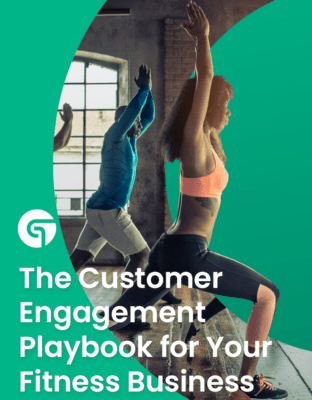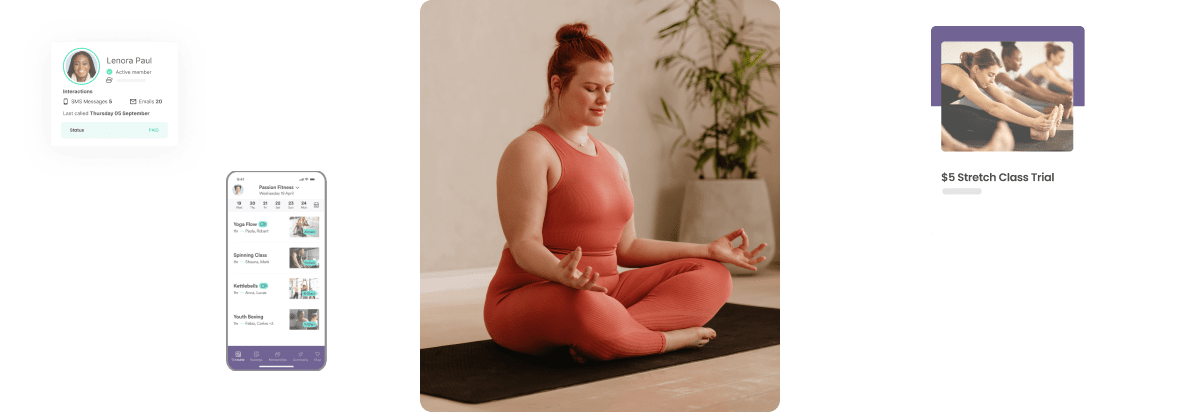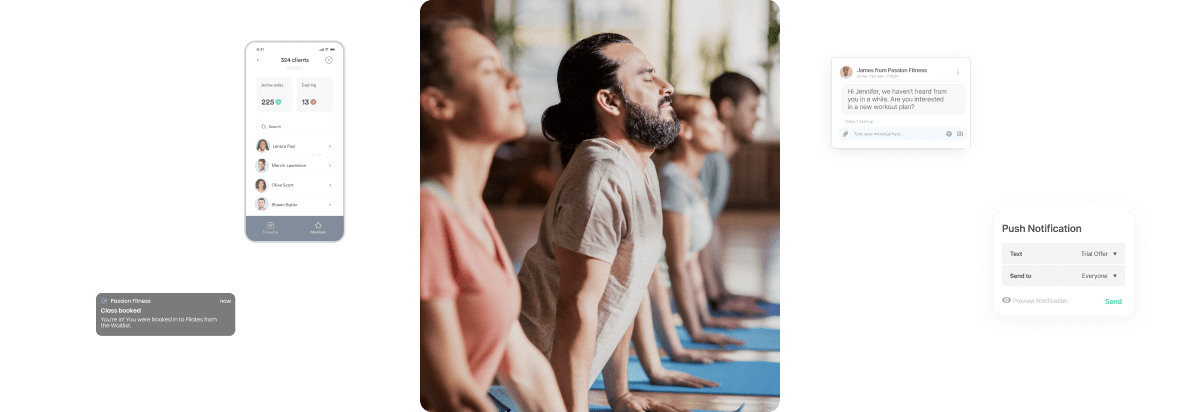It’s an understatement to say that a lot has changed for the fitness industry this year. While we’re all tired of hearing the phrases ‘new normal’ and ‘unprecedented times,’ we’re very much still living through them. It’s been almost nine months since Coronavirus began to impact the world, and throughout that time, we’ve navigated various stages of ‘new normal’ life.
But there’s not much ‘new’ about this normal anymore. If you’re leaving the house, you’ll grab the 2020 essentials: phone, keys, purse, face mask, hand gel. And if you’re a gym owner, your business will have its own requirements to keep in check: sanitizing stations throughout the facility, hour-long blocks allocated for deep cleaning, measures in place to ensure members and staff maintain a 2-meter distance at all times, the list goes on.
The pandemic continues to impact every sector. Fitness is no exception and the majority of fitness businesses have now established an online offering. It was a new adjustment and a quick transition for many, but it’s not just you and your fitness business that has transformed since the start of the year; gym members have changed a lot too.
People considering joining a gym today have new expectations. We’ll cover some of the common objections you might hear as a result of this and how to tackle them later on in this article.
First, we need to understand exactly how gym members have changed, what this means for our industry’s future, and how your gym can deliver to new expectations.
- What’s Changed and Why It Matters
- How to Adapt Your Business to Meet New Expectations
- Adapt and Improve Your Offering
- Go Above and Beyond With Your Brand
- Prepare For Reservations
- Highlight Your Health & Safety Protocols
- Focus on Your Value
- Be Flexible
What’s Changed and Why It Matters
COVID-19 accelerated a trend of at-home workouts, and fitness businesses across the world were forced to respond. The convenience and flexibility of streaming workouts at home can’t be denied; having an online offering is no longer just a ‘nice-to-have,’ it’s essential for running a thriving fitness business in 2020 and beyond.
In a recent Glofox report, we found that worldwide, gym and fitness class activity is currently at 91% of pre-COVID levels. This includes classes that are delivered online, accounting for 5% to 10% of all activity in countries that are fully out of lockdown.
Despite the industry’s biggest challenge to date, our research shows that people are still working out at the gym or online. And despite the strange times that we’re living in, people are still signing up for new gym memberships. But amidst this uncertainty, member expectation has changed:
- Flexibility. Whether it’s classes and workouts, a combined online/in-person membership option, 1:1 coaching, or nutrition programs, consumers today expect flexible options to match our uncertain climate.
- Convenience. Fitness businesses need to adapt to changing circumstances. People want to choose the workout and plan option that suits them, and they now expect these options to be available both onsite and online.
- Safety. Anxiety around covid means some people are apprehensive about visiting a physical gym. These people expect gyms to run a covid-safe environment and regularly communicate the protocols they have in place. Again, they want online options for reassurance that they can still work out even if they don’t feel comfortable visiting a gym.
These changed perceptions and expectations are hugely important to any fitness business planning on acquiring new members in the future.
So how can you plan and deliver?
How to Adapt Your Business to Meet New Expectations
From everything we’ve discussed so far, we can summarise a couple of key points:
- Pivoting to online services has enabled gyms to survive and thrive through lockdown.
- The fitness industry is bouncing back from coronavirus impacts, both online and, where possible, in person.
- Everything is still very uncertain, and members have new expectations from gyms and studios. They want flexibility, convenience, reassurance, and meeting these will rely heavily on using your business’s online arm to its full potential.
Online fitness is here to stay and for gym owners, it’s not just about live-streaming a workout or sharing pre-recorded sessions. It’s about understanding how the pandemic and it’s subsequent online transition has impacted today’s gym-goers, so you can understand what they want and deliver right from the start. Here are six ways your business can adapt to meet new expectations.
1. Adapt and Improve Your Offering
Viewing your online offering as a lockdown backup isn’t enough. Online competition in the fitness space is fierce, and this side of your business needs to improve and grow, just as your onsite business would under normal circumstances.
Stuart Brauer puts this point across perfectly in episode 30 of The Fitness Founders Podcast: “You need to evolve between day 1 and day 21.” Check out the episode below for Stuart’s tips on providing value for members when they go online, ways to keep your customers loyal, and how to use your brand to engage your members.
To improve your offering and appeal to new prospects, your first point of call should be collecting feedback and suggestions from your existing members. So whether it’s a poll in your Instagram stories, an email survey, or working it into a 1:1 check-in conversation – ask your members what they’d like to see more of.
2. Go Above and Beyond With Your Brand
The vast majority of fitness businesses have adapted to provide online services. Everyone is doing it. And so the reality is that while it’s a given that you need to promote your classes to potential members, to stand out from the competition, you need to do more.
Focus on ways you can offer more value to prospects and members – what can you provide outside of your community and classes that others don’t? We’ve listed a couple of ideas below:
- Partner up with local businesses.
This is an excellent opportunity for building brand awareness and reaching a previously untapped audience. Reach out to local businesses to offer your members a discount and, in return, offer their existing customers a trial of your gym or a one-time discounted class pack. Think along the lines of an exclusive ‘membership card’ for your customers: every member gets a card that means they can benefit from various discounts in the local area.
- Bring your community together for a cause.
Paying it forward now is an investment in your future. Make it a part of your gym’s culture that you regularly work as a team to raise money or awareness for causes. Themed classes are a great way to raise funds for a charity, and you can do this both onsite and online. You could set a participation fee that you donate or a direct donation page using a host like Just Giving. Check out this blog post for more ideas on ways to strengthen your brand.
3. Prepare For Reservations
We’ve grown used to living in uncertain times, and by now, the world and its industries are much more aware of what to expect from a second high-level lockdown. But as we briefly touched upon in our introduction, anxiety around COVID-19 means that some people are apprehensive about visiting a physical gym right now. And all of the uncertainty means that even those who are keen to join a gym may have their reservations about making commitments.
When it comes to acquiring new members who fall into these categories, it’s about understanding their mindset so you can provide a solution. Let’s work with a couple of reservation statements you might hear from a prospect today:
The Customer
Engagement Playbook
for Your Fitness
Business
Discover more - “I’ve been looking at your studio, but I’m not ready to visit a gym right now.”
- “I want to join, but what if you have to close again?”
Your mindset when tackling these reservations should be one simple response:
“We’ve got you covered.”
In the next couple of points, we’ll discuss the actions you can take to address these roadblocks.
4. Highlight Your Health & Safety Protocols
Whether it’s on your social media or r website, people who are considering joining your gym should easily see the safety measures you have in place. Testimonials from members who have been in since you’ve introduced Covid protocols are a great way to show this, as well as any photos you may have of your covid-safe studio or classes in action.
Orangetheory Fitness is an excellent example of how all fitness businesses can reassure prospects and members in these uncertain times. When gyms across the world began reopening after the first lockdown, they released a statement detailing how its studios would be operating moving forward. The guidelines were transparent, highlighting plans for its staff and members, as well as hygiene protocols. There’s also a dedicated page on the Orangetheory website clearly outlining all new measures, including an FAQ for members. But what truly stands out about Orangetheory is that they’ve taken reassurance a step further. A video message invites members to see for themselves how Orangetheory is preparing its studios for reopening:
“As a brand that’s committed to helping everyone live a longer, more vibrant life, rest assured that your safety is our top priority.”
Orangetheory proves that while accessible information, FAQs, and step-by-step guides are essential for reassuring members, the best way forward is to show, not tell. The video conveys this message with a different tone. It educates and informs, but the positivity clearly intends to get people excited to get back into the studio.
5. Focus on Your Value
While online fitness has been popular through lockdowns, many people are desperate to workout in an actual gym. For these people, their mindset is counting down the days until the pandemic is really over, so they don’t “have to” workout from their living room anymore. But remember that your member experience online can be just as exceptional as it is in-person, and you can still deliver the same results.
So, if someone is hesitant about signing up for a new membership because they’re worried that your gym might close again, you need to show them that you’re prepared for that situation. Let them trial both an online and onsite class; show them that you’ll be there for them through a second lockdown and there to welcome them back once it’s over.
Draw attention to testimonials from happy online members and everything else they’ll be able to access until they can get back in. Remember to ask questions and find out exactly why they’re not keen on home workouts. Is it because they don’t have equipment? Or is it the social aspect of being part of a gym? It’s only when you understand the why that you can provide a solution and add value. Check out The Fitness Founders Podcast episode below with Mike Arce for more valuable insights on delivering value online:
6. Be Flexible
Both your existing members and any potential new ones anticipate that most areas will have to go into a second lockdown at some point. For some, it has already happened.
While your pricing and packaging will depend on the nature of your business, offering a mix of online and in-studio membership options is an excellent way to show prospects that you’re prepared should you have to close. Remember – you’ve got them covered. For more advice on pricing and packaging your online offering, listen to our conversation with Jack Thomas:
Prospects considering joining a gym now will want to know their options before they commit to anything. Put yourself in their shoes – what questions will they ask? It may seem like a simple exercise, but it’s the best way you can prepare to meet their expectations. Here are a few questions a new gym-joiner might ask to get you thinking in the right direction. Underneath each one, we’ve added considerations to help answer them:
- What happens if I sign up, and then you have to close?
Talk about your online services, focus on how you communicate, and keep your members accountable and feeling part of a community. Perhaps it’s a combination of virtual social events, WhatsApp or Facebook groups, and 1:1 check-ins.
- What classes do you have online?
This one is pretty straight forward, but as we’ve mentioned a couple of times in this article – show, don’t tell where you can. Offer the prospect a trial of an online class if it’s possible so they can see for themselves.
- If I only use online classes, can I have a discount on my membership?
This question will depend on the pricing and packaging that your business has in place. If you don’t offer any explicit discounts, focus on the value of your online offering. Paying a premium price means getting a premium service.
- What if I don’t want to do the online classes? Can I pause my membership?
Again, this will depend on the nature of your business. If pausing memberships is a no-go for you, highlight the other ways you can be flexible. Perhaps you can offer class credits for when your gym is open again.
- With my membership, can I pick and choose whether I join online classes or come into the gym as I please?
Another question that’s personal to your business, but again, it’s a good one to keep in mind. If someone is asking this question, it’s another opportunity for you to show that you can be flexible.
In Summary
Today’s gym members have high expectations; they want more choice than they ever have before and reassurance in uncertain times. The future of fitness is hybrid, so love it or hate it; having an online offering is an essential part of meeting these expectations through 2020 and beyond.
The key to delivering to this comes down to being flexible and agile as a business: you have to have your finger on the pulse of fast-changing consumer expectations and be quick to adapt to what members want, when they want it, and how they want it.
The Customer
Engagement Playbook
for Your Fitness
Business
connects with its customers on a deeper level than a
simple business and consumer relationship.













